Infrared tube heaters, also referred to as tube heaters, are found in large open spaces, such as warehouses, factories, and other industrial spaces. Tube heaters may also be found over doorways to prevent heat loss and on restaurant patios for customer comfort. A tube heater is an alternative to a central heating system. It is a gas-fired device that puts out infrared radiation through its long radiant tubes.
There are two designs of tube heating:
- Pull-through or negative pressure. A pull-through has its fan located at the termination or flue end of the tube.
- Push-through or positive pressure. A push-through has its fan located on the burner or induction end of the tube.
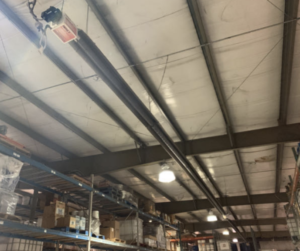
Infrared tube heater in a warehouse (positive pressure)
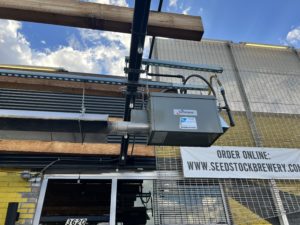
Infrared tube heater on restaurant patio (positive-pressure, note the fan location)
Both designs have a large burner installed on one end and a flue system on the other. The fuel, propane or natural gas is ignited, and the superheated gases and flame travel the length of the tube and out of the building. Reflectors installed at the top of the tubes direct the heat energy from the radiant tube down to the occupied space. The design of the reflector can increase or decrease the amount of heat delivered downward. Note that every unit will have a gas valve and a drip lag.
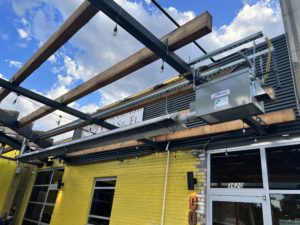
Radiant heat reflecting downward
Common Failures
Since these units are installed on the ceiling, access may be difficult. Inspectors may choose to use binoculars, an advanced zoom camera, or a very tall ladder to access one. The most common failure occurs at the flue end of the system. The upward transition between the tube and the flue system can often be found to be rusted or disconnected. There can also be failures in the igniter or gas valve, and this is why each unit should be operated during the inspection.
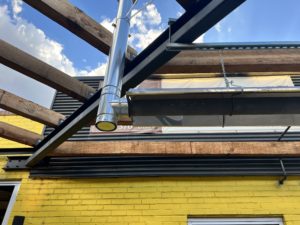
Flue-end
Operating the Unit: Controls
The inspector should use the unit’s controls to test its operation. Units inside a building typically use a standard thermostat that senses the temperature. Then, it turns the unit on and off to help the space reach a set temperature. Units installed outside typically use a timed control. In this case, temperature tracking is not necessary; instead, an infrared tube heater is needed for consistent heat output. A timer prevents the unit from overheating or continuing to run after business hours. Timed controls are common on restaurant patios. An emergency shut-off button may be attached to the control device to terminate the system in the event of an emergency. This button is not automatic and should be clearly labeled.
Before activating infrared tube heaters, the inspector should perform a visual assessment of the unit to identify if the gas is on and if the unit is safe to operate.
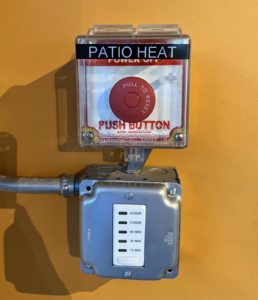
Emergency shut-off and timer for infrared tube heaters on restaurant patio
Download CCPIA’s Infrared Radiant Tube Heater Checklist for additional information about inspecting these systems.
Article Written By: Rob Claus, CMI®
Additional Resources for Commercial Property Inspectors:


